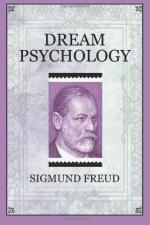When there is nothing in common between the dream thoughts, the dream work takes the trouble to create a something, in order to make a common presentation feasible in the dream. The simplest way to approximate two dream thoughts, which have as yet nothing in common, consists in making such a change in the actual expression of one idea as will meet a slight responsive recasting in the form of the other idea. The process is analogous to that of rhyme, when consonance supplies the desired common factor. A good deal of the dream work consists in the creation of those frequently very witty, but often exaggerated, digressions. These vary from the common presentation in the dream content to dream thoughts which are as varied as are the causes in form and essence which give rise to them. In the analysis of our example of a dream, I find a like case of the transformation of a thought in order that it might agree with another essentially foreign one. In following out the analysis I struck upon the thought: I should like to have something for nothing. But this formula is not serviceable to the dream. Hence it is replaced by another one: “I should like to enjoy something free of cost."[1] The word “kost” (taste), with its double meaning, is appropriate to a table d’hote; it, moreover, is in place through the special sense in the dream. At home if there is a dish which the children decline, their mother first tries gentle persuasion, with a “Just taste it.” That the dream work should unhesitatingly use the double meaning of the word is certainly remarkable; ample experience has shown, however, that the occurrence is quite usual.
Through condensation of the dream certain constituent parts of its content are explicable which are peculiar to the dream life alone, and which are not found in the waking state. Such are the composite and mixed persons, the extraordinary mixed figures, creations comparable with the fantastic animal compositions of Orientals; a moment’s thought and these are reduced to unity, whilst the fancies of the dream are ever formed anew in an inexhaustible profusion. Every one knows such images in his own dreams; manifold are their origins. I can build up a person by borrowing one feature from one person and one from another, or by giving to the form of one the name of another in my dream. I can also visualize one person, but place him in a position which has occurred to another. There is a meaning in all these cases when different persons are amalgamated into one substitute. Such cases denote an “and,” a “just like,” a comparison of the original person from a certain point of view, a comparison which can be also realized in the dream itself. As a rule, however, the identity of the blended persons is only discoverable by analysis, and is only indicated in the dream content by the formation of the “combined” person.




